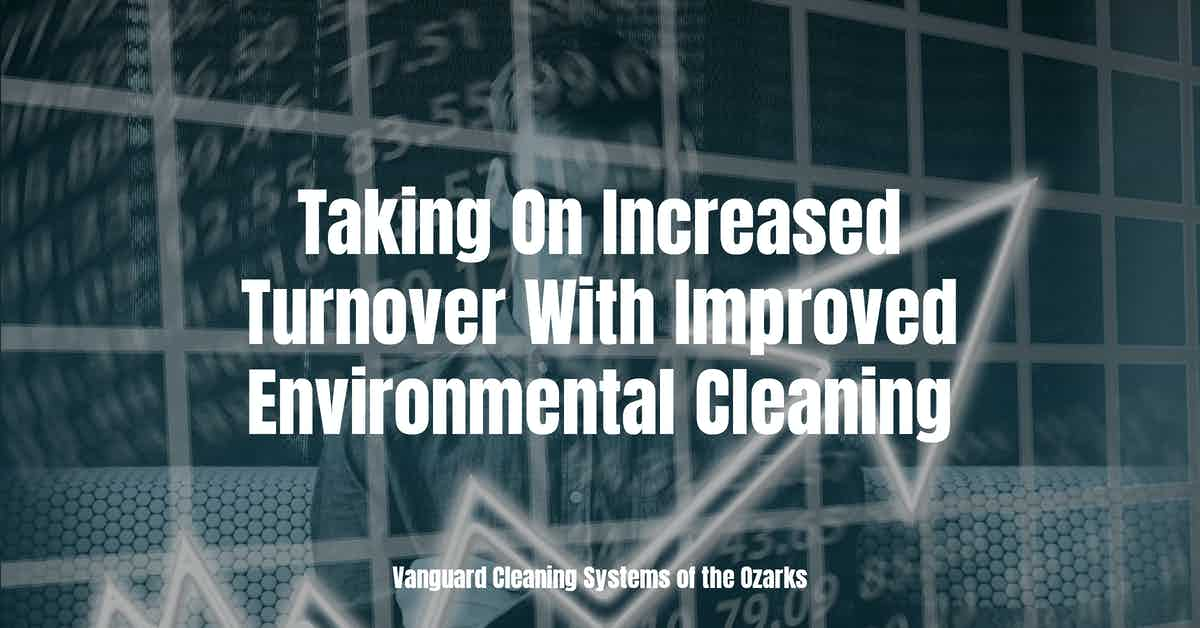Dubbed the Great Resignation--many employees across a broad range of industries are leaving their former employers for greener pastures in the pursuit of more fulfilling employment with organizations that align with their value system.

The Great Resignation and the New Cultural Norm of Environmental Hygiene and Sustainability
2021 will be remembered for many things.
Among those, the year of the Great American Resignation, whereby workers across the country, especially mid-career technology and healthcare workers, voluntarily quit in droves for numerous reasons, including:
- Better salary and benefits.
- Improved potential for advancement, and;
- A corporate culture that is better aligned with their values, including a business's dedication to sustainable initiatives and the health and safety of its workforce.
For organizations negatively impacted by the Great Resignation wishing to turn the tide of misfortune, it is imperative to:
- Quantify the issues created by the Big Quit, and determine the short and long-term impact on their organization.
- Determine the root cause of the issues within their organization that led to the mass exodus, and;
- Develop programs designed to attract and retain a highly-skilled workforce.
What is the Great Resignation?
To confront the challenges presented by the Great Resignation, it is vital to understand what it is and how it began.
According to WeForum.org;
The Great Resignation is an idea proposed by Professor Anthony Klotz of Texas A&M University that predicts a large number of people leaving their jobs after the COVID pandemic ends and life returns to "normal."
Managers are now navigating the ripple effects of the pandemic, as employees re-evaluate their careers and leave their jobs in record numbers.
At the onset of the pandemic, the job market was full of uncertainty and mass layoffs: millions of people lost their jobs, and those lucky enough to remain employed remained put in their roles for survival.
However, as we now turn towards recovery, workers in privileged positions who don’t live paycheck to paycheck are now finally moving on.
Small Pebbles Make Big Ripples
Quantifying the cost of the pandemic-driven trend in workforce migration is critical, but potentially challenging.
What may appear to be a slight turnover increase on the surface may be a massive hemorrhage in profits resulting from increases in hiring and training costs.
Take, for example, the case of a US-based trucking company cited in a recent Harvard Business Review article.
[A] trucking company I worked with identified that what appeared to be a small increase in turnover due to a nationwide driver shortage was in fact costing them millions of dollars in hiring and training resources.
Quantifying the problem both helped leaders get the internal buy-in necessary to address it, and informed decisions around what kind of retention interventions would be most effective.
Why are Workers Quitting in Record Numbers?
One of the more interesting data points gathered throughout the Great Resignation has been the number of workers who have quit without a new job lined up.
According to McKinsey & Company;
Employees in the United States were the most likely to say they had left their old jobs without a new one (40 percent).
At the industry level, 42 percent of healthcare and social-assistance workers who quit did so without having a new job—a reminder of the pandemic’s toll on frontline workers.
One-quarter of white-collar employees who quit said they had done so without having a job lined up, a finding that held across income levels.
This trend not only is poised to continue but could get much worse.
Among employees who said they are at least somewhat likely to leave their jobs in the next three to six months, almost two-thirds added that they would do so without lining up new jobs.
‘Great Attrition’ or ‘Great Attraction’? The choice is yours
Reportedly, attempts by employers to retain the workforce in the form of:
- Pay increases,
- Bumps in incentives and perks, and
- Financial bonuses
have failed to sway much of the labor force who want a renewed sense of purpose in their work and to know they are valued by their managers and the organizations that employ them.
Attracting and Retaining A Highly Skilled Workforce
Two of the most commonly cited concerns voiced by US office workers revolve around:
- The consistency of high-quality cleaning and disinfection services within an office, and;
- Their employer's impact on the environment and commitment to implementing genuinely sustainable business practices and reducing their carbon footprint.
According to a 2021 Harris Poll:
- 84% of Americans intend to continue the enhanced hygiene practices they adopted during the pandemic.
- 65% who worked in an office before COVID-19 expressed concerns about the cleanliness and hygiene of their workplace.
- 59% of office workers have increased expectations regarding their employer's hygiene protocols in the office, and;
- 58% want more frequent cleaning and sanitizing.
Source:
The commitment to environmentally-sustainable practices is equally critical.
According to an international survey of more than 3,000 people conducted by BCG;
Some 70% of survey participants said they were more aware now than before COVID-19 that human activity threatens the climate is and that degradation of the environment, in turn, threatens humans.
And three-quarters of respondents said environmental issues are as concerning as—or more concerning than—health issues.
Environmental responsibility is so important to emerging workforce demographics that most are willing to take a significant pay cut to work for businesses with a proven sustainable commitment.
According to Fast Company;
In a recent survey, nearly half of all respondents and three-quarters of millennial workers said the same thing; more than 10% of workers said they’d be willing to go as far as to take a $5,000-$10,000 pay cut.
More than 70% said that they were more likely to choose to work at a company with a strong environmental agenda.
Millennials–who will make up three-quarters of the workforce in six years–are most likely to have done this; nearly 40% said that they’ve chosen a job in the past because the company performed better on sustainability than the alternative.
Most millennials would take a pay cut to work at a environmentally responsible company
Takeaway
2021 saw a skilled workforce quit their jobs, often without the prospect of future employment, in waves that will be felt for years to come.
While many appeared outwardly frustrated with a lack of advancement and stagnant wages, the real data told a different story.
People want to work for a company that aligns with their values and treats them with respect.
That clearly translates into a clean, safe, and healthy workplace that is dedicated to environmental sustainability.
Contact us today and discover why Vanguard Cleaning Systems® is the Standard of Clean® for businesses throughout Northwest Arkansas, Missouri, and Oklahoma.
In Oklahoma, dial 918-960-4450
In Arkansas, dial 479-717-2410
In Missouri, dial 417-812-9777

